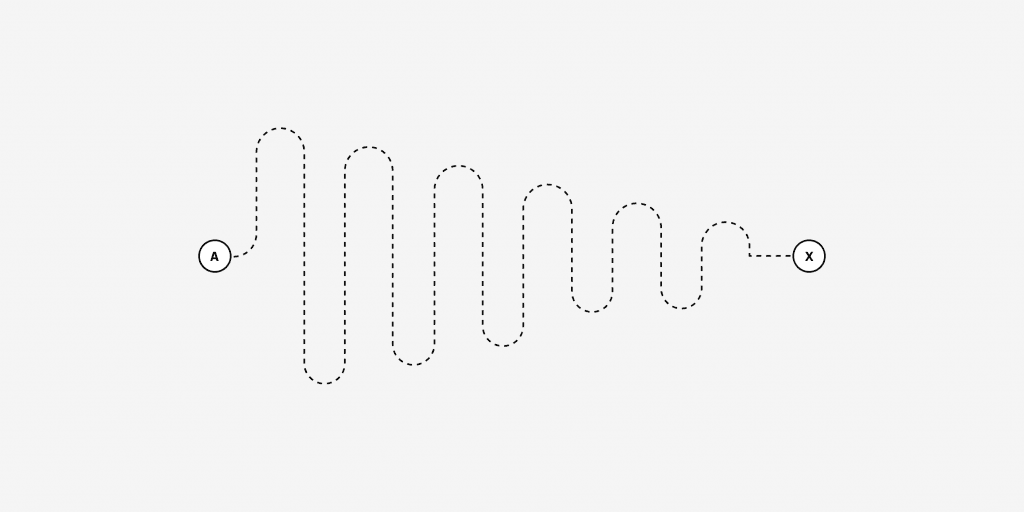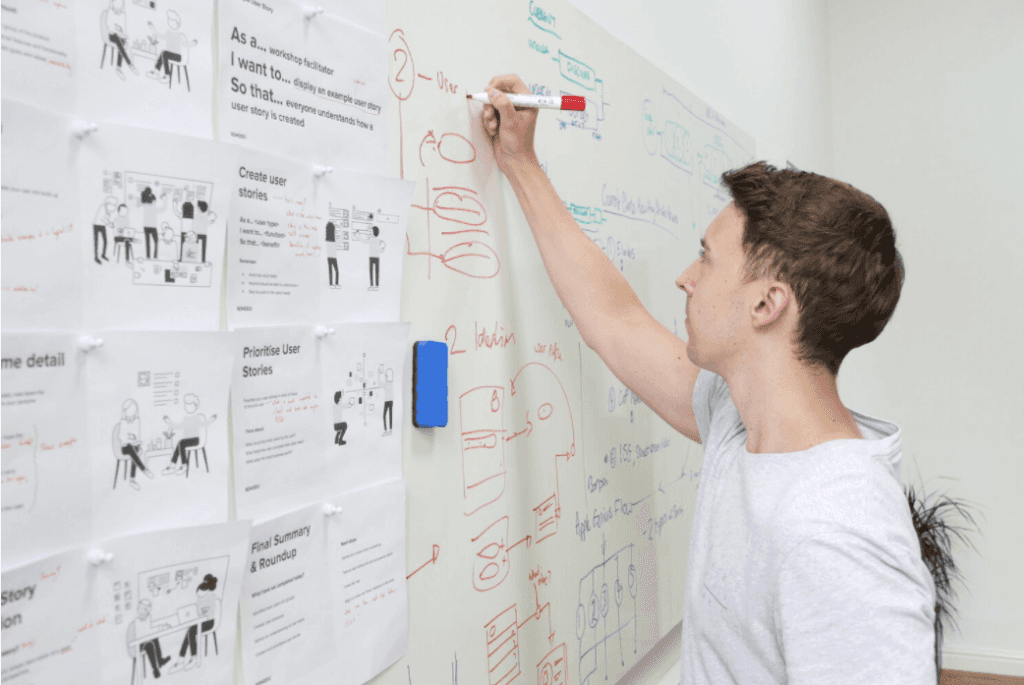How to use the Design Thinking Methodology to Solve Complex Problems
UI/UX Design

What is the design thinking mthodology?
Design thinking is a human-centred methodology that can help tackle complex problems, often unknown or unclear, by challenging assumptions and using a hands-on approach. Essentially it’s an approach used for creative problem-solving. Design thinking is not restrictive to design problems. Many companies within a multitude of sectors can adopt this methodology seeking to identify a solution to a problem. The process is exceedingly user-centric, ensuring that the user needs are an absolute priority. This process follows 5 stages that will take a vague problem, define it, generate solutions to it and iterate until it aligns with the users needs.
Empathise/Understand
This is the first stage of the design thinking process which will help create a foundation to build upon by helping define the problem. By understanding who you are designing for it provides a deeper perception of the issues at hand. It offers a users perspective to solve the problem from, ensuring that the solution best fitted to the user is embraced.
Define
During this stage the information and insights collected within the empathise step will be collated and analysed. Problem statements are a great way to define a problem into digestible chunks. By exploring the information collected in the previous stage it helps outline and to better concrete down problem statements. This stage is to ensure that the problems are framed in a clear and concise way. The clearer the problem statement is the better chance there is of finding a solution to it. It is advised that a prolonged period of time should be spent on this to avoid an uncertain problem that does not align with the issues identified by the users. By reframing your perspective based on insights gathered in the previous stage is crucial.

Ideate
Once problem statements have been identified its time to interpret these and brainstorm (ideate). Although difficult to do, banishing judgement is paramount to ensure each thought is considered and every avenue is thought of. This session will hopefully help generate both logical and perhaps obscure ideas helping to provide a large spectrum of solutions to the problem statements. The concept behind this is to help stimulate each participant into providing input to the session. This can also promote conversation between the attendees which otherwise may not transpire. By not limiting the ideation stage to ‘logical’ ideas offers a better chance for dialogue and may trigger others to input into the session.
Prototype
In order to experiment with the solutions identified in the prior stage and see which works best, prototypes need to be generated. This includes, but not restricted to, sketching, low fidelity wireframes and eventually a design mockup. Traditionally this process will begin with the former and end with the latter. Although, as mentioned this methodology is not limited to design, meaning a prototype may take a completely different form depending on the application. Universally, however, more simplistic prototypes allow for quicker iteration as nothing is precious. Any additional detail and thought added to the prototype will increase the time invested but may help explore new aspects of the solution.
Test
After a prototype has been produced it needs testing to measure its fit for purpose. The feedback received during this phase is essential, it provides a unique opportunity to get further user insight. This is very rarely the endpoint of the process but yet a precursor to revisiting prior stages to help refine the solution. Testing can include user groups, 1 on 1 and A/B testing, each of these tests have their own positives and can unlock different types of feedback. This feedback helps to guide the solution to the correct destination.
Summary
This was a quick insight into what the design thinking process encapsulates. At the heart of this methodology is the determination to improve the way users interact with your product or system, by evaluating how they use it and eliminating the pain points. We have more in-depth articles coming soon, they will help outline what the design process means and how it can help you.

Sign up to our newsletter
Be the first to hear about our events, industry insights and what’s going on at Komodo. We promise we’ll respect your inbox and only send you stuff we’d actually read ourselves.







